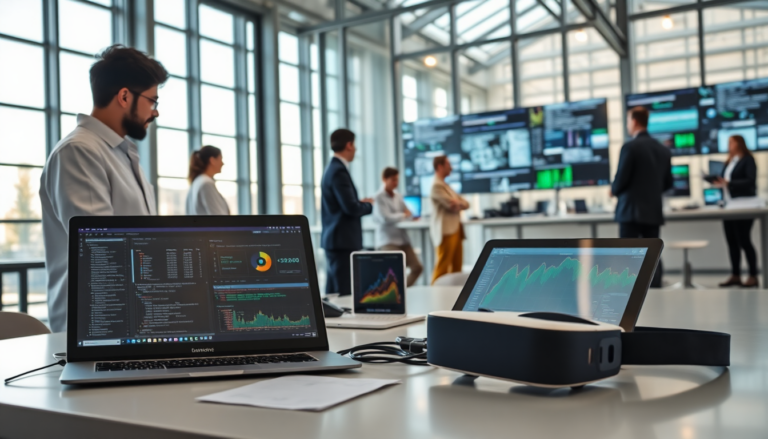Argomenti trattati
In today’s fast-paced tech landscape, one innovation stands out on the horizon: the rise of multimodal AI systems. By 2025, these systems are poised to transform industries across the board, seamlessly blending text, images, audio, and sensor data with a human-like touch. But this shift isn’t just about upgrading technology; it’s about rethinking our entire approach to artificial intelligence.
The Impact of Multimodal AI on Healthcare
In the healthcare sector, the integration of multimodal AI is nothing short of revolutionary. Imagine AI models that can analyze a mix of medical images, patient records, and real-time monitoring data. These advancements provide diagnostic insights that were once beyond reach. For example, these intelligent systems can spot rare medical conditions that even experienced professionals might miss, ultimately improving patient care. With the ability to process diverse types of data, we gain a more comprehensive view of a patient’s health, which leads to more accurate diagnoses and personalized treatment plans.
And it’s not just about diagnosis. As these AI systems evolve, they hold the potential for predictive analytics that could identify health trends and outbreaks before they escalate. Think about the impact this could have on public health initiatives—imagine timely interventions and smarter resource allocation that could save lives. The future of healthcare isn’t just about advanced medical technologies; it’s about intelligent systems that understand and anticipate patient needs.
Transformations in Autonomous Vehicles and Robotics
The automotive and robotics sectors are also experiencing a revolution thanks to multimodal AI. By integrating visual, audio, and sensor data, these systems significantly enhance the safety and efficiency of autonomous vehicles. They enable real-time analysis of the environment, paving the way for smarter navigation and adaptive responses to unpredictable situations. This not only increases safety for passengers but also boosts public confidence in autonomous technologies.
As this technology matures, we can expect even more sophisticated robotic systems capable of tackling complex tasks in dynamic environments. Picture robots equipped with multimodal AI assisting in logistics, construction, or even home care, adjusting their actions based on real-time feedback from their surroundings. The implications for efficiency and productivity are enormous, hinting at a future where machines and humans collaborate more seamlessly than ever.
Enhancing Enterprise Productivity
In the business world, multimodal AI is unlocking new levels of productivity by automating intricate workflows. Companies are starting to harness these advanced systems to streamline processes like customer service and compliance management. By integrating various data types, businesses can craft personalized experiences for their clients while slashing operational costs.
This shift towards automation not only boosts efficiency but also frees up organizations to focus on strategic initiatives instead of mundane tasks. As multimodal AI advances, its applications will continue to expand, potentially reshaping every aspect of business operations. Companies that take the plunge and embrace this technology are likely to gain a significant competitive edge in their markets.
Looking Ahead: The Future of Multimodal AI
The rapid advancement of multimodal AI is driven by the increasing accessibility of technology. Recent research has dramatically reduced the costs associated with fine-tuning large language models, making this powerful tool available to startups and researchers alike. As we shift our focus from sheer model power to usability and trust, we can anticipate a surge of innovative applications and solutions.
As multimodal AI approaches human-level performance, we are on the cusp of witnessing the emergence of truly intelligent assistants and decision-making tools. The future promises not just AI that can see or hear but one that comprehends context and nuance, paving the way for groundbreaking advancements across all sectors of society. Are you ready to embrace this exciting future?

